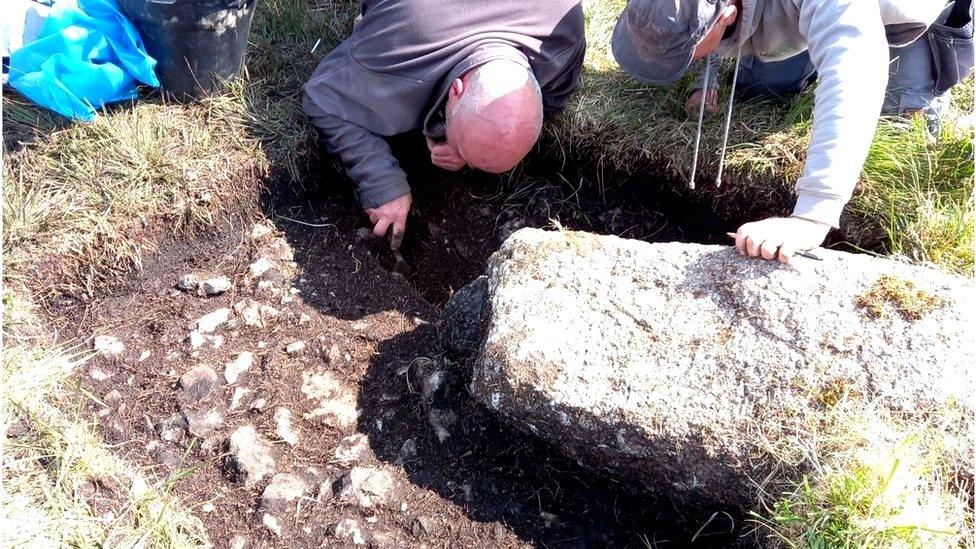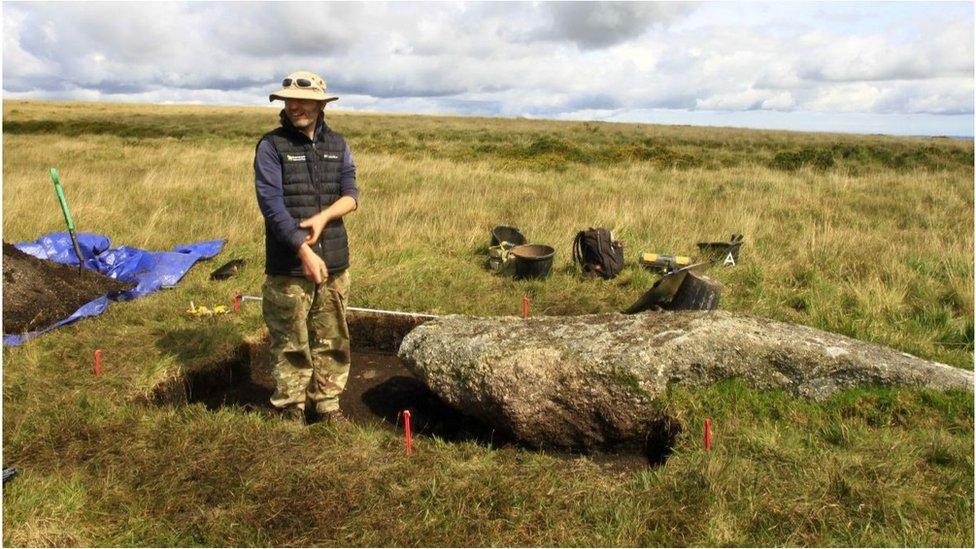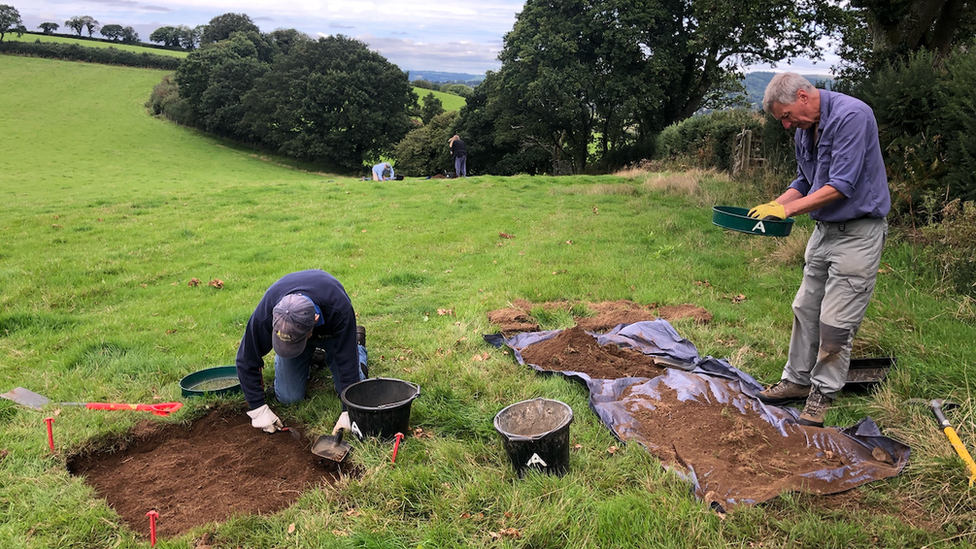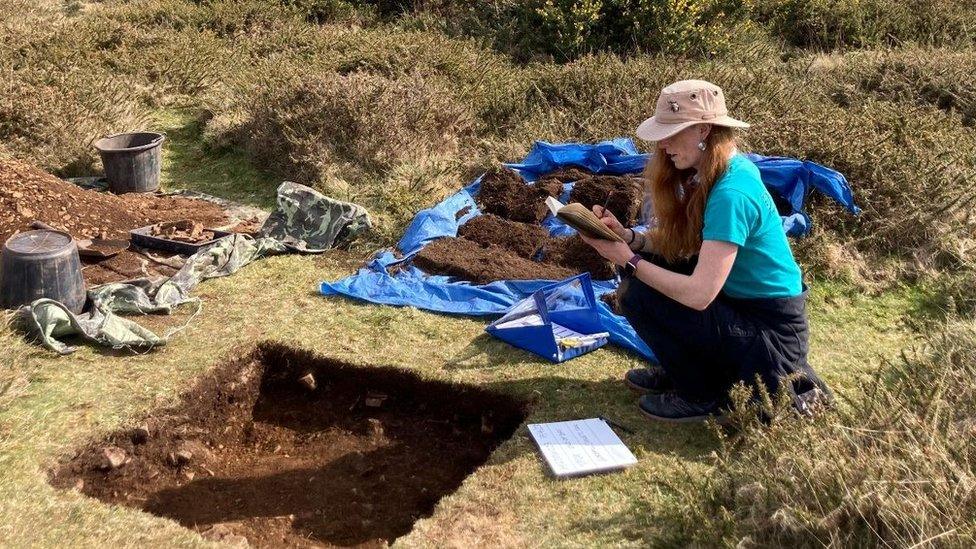Dartmoor dig finds paved surface at Piles Hill stone row
- Published

The paved surface was discovered by chance during a survey of the stone row by archaeologists
Archaeologists have discovered a paved surface under a double stone row that dates back thousands of years.
The 590ft (180m) long path of mainly quartz rocks was possibly laid to enhance the setting of Piles Hill, one of the longest stone rows on Dartmoor.
Piles Hill consists of two parallel lines of large stones that curve for 2,788 (850m) across a wide ridge.
The paved surface was discovered by chance during a survey of the stone row by archaeologists.

There are about 40 visible stones, some upright, but most are flat on the ground and hidden by vegetation
Teams from Dartmoor National Park, Exeter-based Isca Archaeology and volunteers were investigating the stone row, which is thought to date back to the Neolithic or early Bronze Age.
There are about 40 visible stones, some upright, but most are flat on the ground and hidden by vegetation.
National Park archaeologist and excavation director Andy Crabb said: "In our last trench we uncovered a paved cobble-like surface made of angular rocks consisting predominantly of white quartz.
"At first, we thought it was the natural geology but further investigations showed otherwise.
"We think the rocks were brought to the site and laid there deliberately, possibly to enhance the setting of the stone row."
A paved causeway was found at The Hurlers, a prehistoric complex on the granite uplands of Bodmin Moor, during a dig in the 1930s.

Follow BBC News South West on Twitter, external, Facebook, external and Instagram, external. Send your story ideas to spotlight@bbc.co.uk, external.
Related topics
- Published30 August 2023

- Published21 April 2023

- Published18 February 2013
